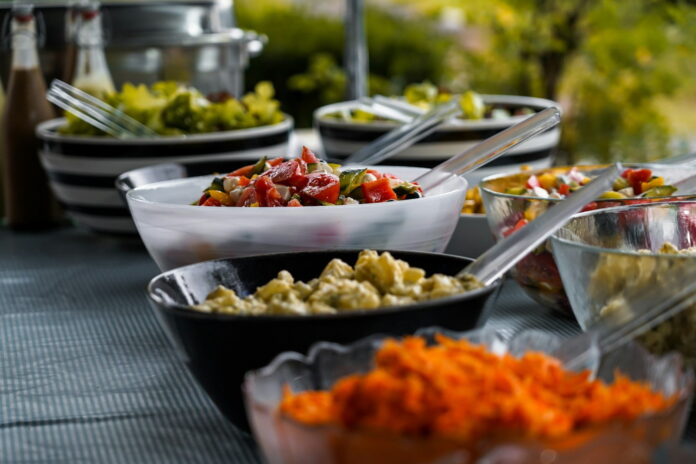The food industry is undergoing a significant transformation in response to the increasing awareness of environmental issues, with a particular focus on reducing plastic use and waste. The push for green packaging is not just a trend; it’s a necessary shift towards sustainability that is being driven by consumer demand, regulatory pressures, and a collective responsibility to protect our planet.
The Push for Green Packaging
The movement towards green packaging in the food industry is a response to the growing concern over environmental degradation caused by conventional plastic packaging. Companies are increasingly recognizing the need to reduce their ecological footprint and are seeking eco-friendly alternatives that are both sustainable and cost-effective. Governments around the globe are also playing a pivotal role by enacting regulations to limit single-use plastics and encourage the adoption of greener options. This regulatory landscape is fostering a more competitive market for sustainable packaging solutions, with companies striving to meet both consumer expectations and compliance requirements.
Consumer awareness and demand are powerful drivers in the push for green packaging. As individuals become more environmentally conscious, they expect the brands they support to reflect similar values. This customer-driven force is compelling companies to reevaluate their packaging strategies and invest in research and development of sustainable options. Social media and digital platforms have amplified the conversation around the negative impact of plastic waste, further galvanizing public support for eco-friendly alternatives.
The realization that sustainable practices can lead to cost savings in the long term is motivating businesses to transition to green packaging. Reduced material usage, improved logistics, and the potential for increased brand loyalty among eco-conscious consumers are among the financial incentives. Green packaging also opens the door to new market opportunities, as products with eco-friendly credentials can differentiate themselves in a crowded marketplace, potentially commanding a premium price and customer preference.
Innovations in Sustainable Materials
In the realm of eco-friendly packaging solutions, a myriad of innovative materials are replacing traditional plastics. Biodegradable and compostable materials, such as polylactic acid (PLA) made from fermented plant starch, are gaining traction. These materials can break down under specific conditions, leaving minimal environmental impact. Other materials, like mushroom mycelium and seaweed, are being explored for their natural decomposing properties and minimal resource requirements during production.
Another breakthrough in sustainable packaging is the development of edible films and coatings. These materials not only serve as a barrier to protect food products but also offer the added benefit of being consumable, thus leaving no waste behind. Companies are experimenting with natural substances such as proteins, lipids, and carbohydrates to create these edible packaging solutions. For instance, the use of milk protein to create films that can prevent spoilage and extend shelf life is a promising advancement.
The recycling of post-consumer materials is also playing a significant role in sustainable packaging. Innovations in recycling technology have made it possible to create high-quality food-grade packaging from recycled plastics and other materials. These advancements help to close the loop in the product lifecycle, reducing the need for virgin materials and the overall environmental impact. The food industry is also seeing a shift towards using more paper-based packaging, which is often easier to recycle and has a lower carbon footprint than traditional plastics.
Challenges and Future Outlook
Despite these successes, the food industry faces several challenges in adopting eco-friendly packaging. The cost of sustainable materials can be higher than conventional plastics, which can deter smaller companies from making the switch. Additionally, the infrastructure for composting and recycling is not yet widespread or efficient enough to handle the increase in biodegradable and compostable materials, leading to potential waste management issues.
Another challenge lies in the performance and functionality of sustainable packaging. It must meet the same standards as traditional packaging in terms of protecting food, extending shelf life, and withstanding transportation. Research and development are critical in overcoming these barriers, but it requires significant investment and collaboration between the private sector, governments, and research institutions.
The future outlook for eco-friendly packaging in the food industry is nonetheless optimistic. Continued innovation, coupled with evolving consumer preferences and stricter regulations, is likely to drive further progress. As technology advances and economies of scale improve, the costs associated with sustainable packaging solutions are expected to decrease. Additionally, the development of better waste management systems and increased global cooperation on environmental issues will help to address the challenges of transitioning to a greener packaging paradigm.
The food industry is at a pivotal juncture in its journey towards sustainability, with eco-friendly packaging playing a central role. Companies, big and small, are adopting innovative materials and embracing the principles of a circular economy to reduce their environmental impact. While there are challenges to overcome, the success stories of pioneering brands serve as a testament to what is possible. With continued innovation, consumer engagement, and supportive regulatory frameworks, the future of food packaging looks greener and more sustainable. The commitments made today will shape the health of our environment for generations to come, making the pursuit of eco-friendly packaging solutions in the food industry both a responsibility and an opportunity.
